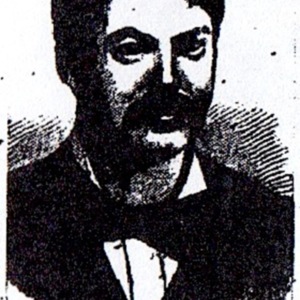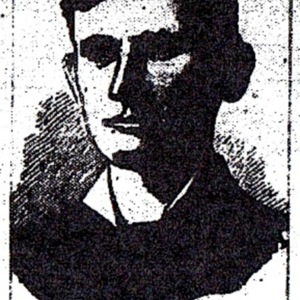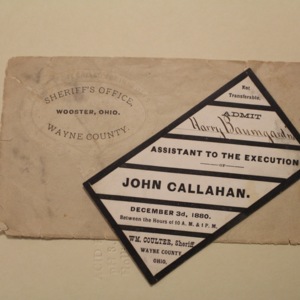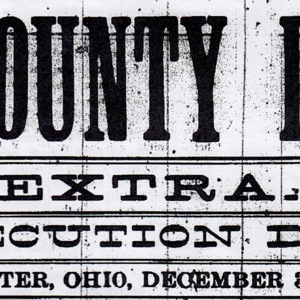The 1871 Murder of John Tormie
- Home
- Society & Social Movements
- Exhibits
- The 1871 Murder of John Tormie
revised by Jordan Wilson
Historical Context
The Gilded Age, a term coined by Mark Twain and Charles Dudley, refers to the period between Post-Reconstruction (1878) and Pre-Progressivism (1889). Historians today discuss how this time of fast-paced growth in industry, immigration, and cities trickled down to and affected everyday interactions. The framework of the Gilded Age serves as a key component to exploring the fateful day of October 2nd, 1879, when the Wooster community was uprooted by a violent murder at the Old Wayne County Fairgrounds. The murder, trial, and subsequent public execution catalyzed the beginning divisions within Wooster, Ohio.1
Piecing Together What Happened
Until 1879, Wayne County only had six documented homicides. However, on October 2nd, 1879 the seventh homicide occurred and the local newspaper, The Wayne County Democrat, characterized the murder as the “bloodiest killing of a man.”2
The murder of John Tormie was committed at the old Wayne County Fairgrounds, known as Branstetter Crossing, now where the Frito-Lay factory is located.3 The fair was closing for the day and around 5 or 6 o’clock the last of its guests, 50 to 100 people, were on their way out.4 These guests would be the only eyewitnesses to the brawl between John Tormie and five individuals which eventually escalated to the fatal stabbing and murder of Tormie.
Tormie and his brother-in-law, Frank Martin, were leaving the fairgrounds for the day after spending the majority of the day hosting a ball-throwing game of chance. While leaving, Tormie and Martin crossed paths with a group of six young men – John Callahan, James Saddler, Anthony McGowan Jr. and Sr., Michael Burke, and Michael Mulready.5 While at first their interactions appeared friendly, something still unknown triggered a brawl to commence.6 The first physical attacked occurred when eighteen year old James Saddler hit Frank Martin over the head with a cane.7 After this first attack, John Tormie triggered a verbal fight by running after the group of young men cursing and preparing to fight back.8 Eventually Tormie’s assailants took turns beating him with a cane and billy club. Once both parties became involved, the brawl morphed into a back-and-forth fight between Tormie and his assailants.9
Throughout the fight, both the chief of police, George Smyser, and Officer William Taggart were present. However, it wasn’t until after Tormie chased Michael Burke out of the fairgrounds and searched for the primary assailant, James Saddler, that law enforcement and citizens stepped in to stop the ensuing brawl.10 At this point reports claim that only six minutes had passed between the first hit and the public spectacle occurring.11 The public spectacle was an attempt to separate Tormie from his assailants, however this only lasted for a few moments – Tormie’s assailants pressed on.12 The pursuit for Tormie’s life escalated, eventually leading to Tormie revealing his single barreled pistol and exclaiming, “let me alone or I will shoot you!”13
The escalated brawl introduces John Callahan into the murder of Tormie. While Callahan was one of the assailants, he didn’t take center stage of the fight until after Tormie revealed his pistol and continued to flee from the six assailants, eventually leading to where he was knocked into John Callahan and tumbled down the hill, which became known as the “running fight.”14 At this point the quarrel had moved from Mechanics’ Hall to between Floral Hall and the gate entrance.15 This area is where John Tormie received his final beatings from Saddler, Mulready, Anthony McGowan Jr. and Sr. Meanwhile John Callahan proceeded to stab John Tormie three times.16 Witnesses claim they saw Callahan stepping away and saying, “I guess he has got enough. I have fixed the son of a bitch.”17
The Individuals at Hand

As a father, husband, and brother-in-law, Wooster’s citizens respected John Tormie and reacted violently to news of his brutal murder – beatings from multiple assailants and three fatal stab wounds – after he supervised a simple game of chance at the county fair.18 Although there is not an abundance of evidence surrounding the life of John Tormie, what we know about him matched an everyday well-respected man of the late 1800s. Hence, Tormie’s brutal murder had lasting effects for the entire community, as Wooster residents asked themselves how such a well-liked individual could suffer from such brutality?
Pictured left: John Tormie
News of Tormie’s murder spread like wildfire. Immediately citizens began rioting outside of Dr. Todd’s home on West Liberty Street, where Tormie took his last breaths. Citizens protested on West Liberty Street for justice, exclaiming: “law and order” and “blood for blood!”19 Ultimately these riots and the phrase “blood for blood” signify the degree in which citizens were involved with John Callahan’s trial and execution, representing how one murder sparked public engagement and debate within the Wooster Community.

John Callahan was twenty-two years old at the time of his execution. Born in 1858 on a small farm in Cooperstown, Wisconsin, Callahan was the second child of five to his father, Irish immigrant Michael Callahan. At the time of his execution, Callahan stood six feet tall and weighed 180 pounds.20
Callahan epitomizes a common character of the late 1800s: the child of immigrants raised on principles of farming. John Callahan represented a significant population of America at this time and their internal strife.
Pictured right: John Callahan
A key component to this time period is the rising levels of immigration. Historian Joel Shrock notes the connection between changing tactics of crime and changing patterns of immigration. Shrock mentions how during the Gilded Age the social construct of crime shifted because “crime took on new guises… as the nature and style of crimes changed with massive immigration.”21 In conjunction with shifting appearances of crime, citizens were fearful of a “murder crisis”22 because of a post 1865 statistic – a 60% increase in homicides. Due to this fear, many native-born Americans blamed immigrants for the rise in crime.23
This larger context of associating immigrant newcomers with a rise in violent crimes serves as explanation to why Wooster’s citizen reacted indignantly towards John Callahan. Many people interpreted Callahan’s actions as typical of the “belligerence of being an immigrant” or, as some put it in the local newspaper “the drunken Irishman” acting out.24
Interpreting the Evidence
In the weeks leading up to his public execution, Wooster residents were divided about Callahan’s sentencing. The debate centered around some individuals viewing Callahan being unfairly singled out from his accomplices, while others support the execution sentence because the brutality of the murder was distressing and Callahan was responsible for the fatal wounds.

The minority of Callahan’s supporters attempted to repeal his sentencing. His friends and family pushed a “100 day reprieve” for reconsideration of other means for punishment than execution. Their circulating petition attempted to persuade Governor Charles Foster to change Callahan’s sentence of execution to life in prison. With this petition Callahan slowly began to gain more support and eventually, the petition gathered two thousand signatures. While Governor Foster took the petition into consideration, he chose to not change Callahan’s sentence. His decision was released via telegram to Wooster Sheriff Coulter stating, “let the law take its course.”25 The Governor’s decision solidified the divide in Wooster because it allowed Wayne County’s first execution and concrete repercussive actions of both John Tormie’s assailants and citizen’s rioting immediately after the murder.

Citations
1 Shrock, Joel. The Gilded Age. Westport, Conn.: Greenwood Press, 2004. Pp xiii.
2 “Murder! Killing of John Tormey at Wooster Fairgrounds,” Wayne County Democrat (Wooster, OH), Oct. 8th, 1879. Pp 1.
3 Locher, Paul. When Wooster Was a Whippersnapper – Two Hundred (or So) Yarns about Wooster for Two Hundred Years. Wooster, Ohio, 2008. Pp 159.
4 “Murder! Killing of John Tormey at Wooster Fairgrounds,” Wayne County Democrat (Wooster, OH),Oct. 8th, 1879. Pp 1.
5 Locher, Paul. When Wooster Was a Whippersnapper – Two Hundred (or So) Yarns about Wooster for Two Hundred Years. Wooster, Ohio, 2008. Pp 159.
6 Ibid. Pp 159.
7 “Murder! Killing of John Tormey at Wooster Fairgrounds,” Wayne County Democrat (Wooster, OH), Oct. 8th, 1879. Pp 1.
8 Locher, Paul. When Wooster Was a Whippersnapper – Two Hundred (or So) Yarns about Wooster for Two Hundred Years. Wooster, Ohio, 2008. Pp 159.
9 “Murder! Killing of John Tormey at Wooster Fairgrounds,” Wayne County Democrat (Wooster, OH), Oct. 8th, 1879. Pp 1.
10 Locher, Paul. When Wooster Was a Whippersnapper – Two Hundred (or So) Yarns about Wooster for Two Hundred Years. Wooster, Ohio, 2008. Pp 159.
11 “Execution Day Special: John Callahan” Wayne County Democrat (Wooster, OH), Dec. 3rd, 1880. Pp 1.
12 “Murder! Killing of John Tormey at Wooster Fairgrounds,” Wayne County Democrat (Wooster, OH), Oct. 8th, 1879. Pp 1.
13 Locher, Paul. When Wooster Was a Whippersnapper – Two Hundred (or So) Yarns about Wooster for Two Hundred Years. Wooster, Ohio, 2008. Pp 159.
14 Ibid. Pp 160.
15 “Execution Day Special: John Callahan” Wayne County Democrat (Wooster, OH), Dec. 3rd, 1880. Pp 1.
16 Locher, Paul. When Wooster Was a Whippersnapper – Two Hundred (or So) Yarns about Wooster for Two Hundred Years. Wooster, Ohio, 2008. Pp 159.
17 “Murder! Killing of John Tormey at Wooster Fairgrounds,” Wayne County Democrat (Wooster, OH), Oct. 8th, 1879. Pp 1.
18 Ibid. Pp 1.
19 Emerson, Rhonda. “Early Wayne History Including Hanging For Murder.” The Daily Record. (Wooster, OH), Dec. 2nd, 1967. Pp 1.
20 Shrock, Joel. The Gilded Age. Westport, Conn.: Greenwood Press, 2004. Pp 2.
21 Ibid. Pp 11.
22 Ibid. Pp 12.
23 “Murder! Killing of John Tormey at Wooster Fairgrounds,” Wayne County Democrat (Wooster, OH), Oct. 8th, 1879. Pp 1.
24 Emerson, Rhonda. “Early Wayne History Including Hanging For Murder.” The Daily Record. (Wooster, OH), Dec. 2nd, 1967. Pp 1.
How to cite this page
MLA: “The 1871 Murder of John Tormie.” stories.woosterhistory.org, http://stories.woosterhistory.org/the-1871-murder-of-john-tormie/. Accessed [today’s date].
Chicago: “The 1871 Murder of John Tormie.” stories.woosterhistory.org. http://stories.woosterhistory.org/the-1871-murder-of-john-tormie/. (accessed [today’s date]).
APA: (Year, Month Date). The 1871 Murder of John Tormie. stories.woosterhistory.org. http://stories.woosterhistory.org/the-1871-murder-of-john-tormie/.

